Welcome to Daejeon! This is South Korea’s fifth-largest city waiting to be explored. Often referred to as the “Silicon Valley of Korea,” Daejeon is a hub of technology, innovation, and education. But don’t let its modern facade fool you; the city has plenty on tap. This travel guide will unveil the top things to do in Daejeon, ensuring you experience a memorable trip.
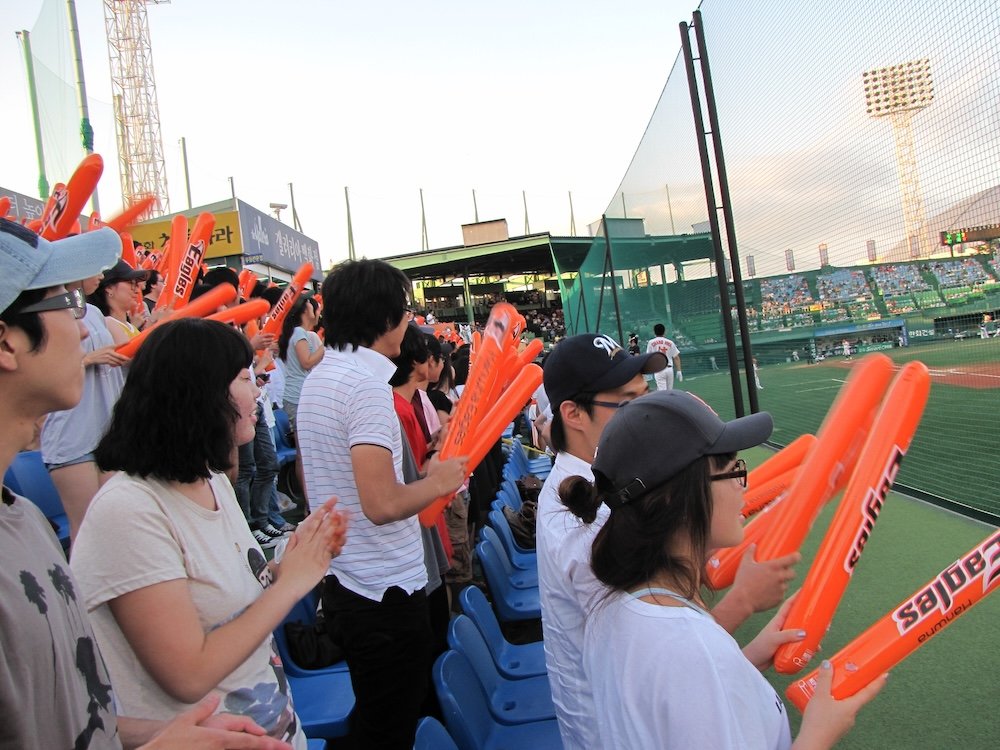
Nestled in the heart of the Korean peninsula, Daejeon offers a diverse range of attractions. From soaking in hot springs to exploring cutting-edge science museums, there’s plenty on offer. The city’s vibrant food scene, lush parks, and historical sites make it a must-visit destination. Whether you’re a solo traveler, a couple, or a family, Daejeon’s welcoming atmosphere will draw you in.
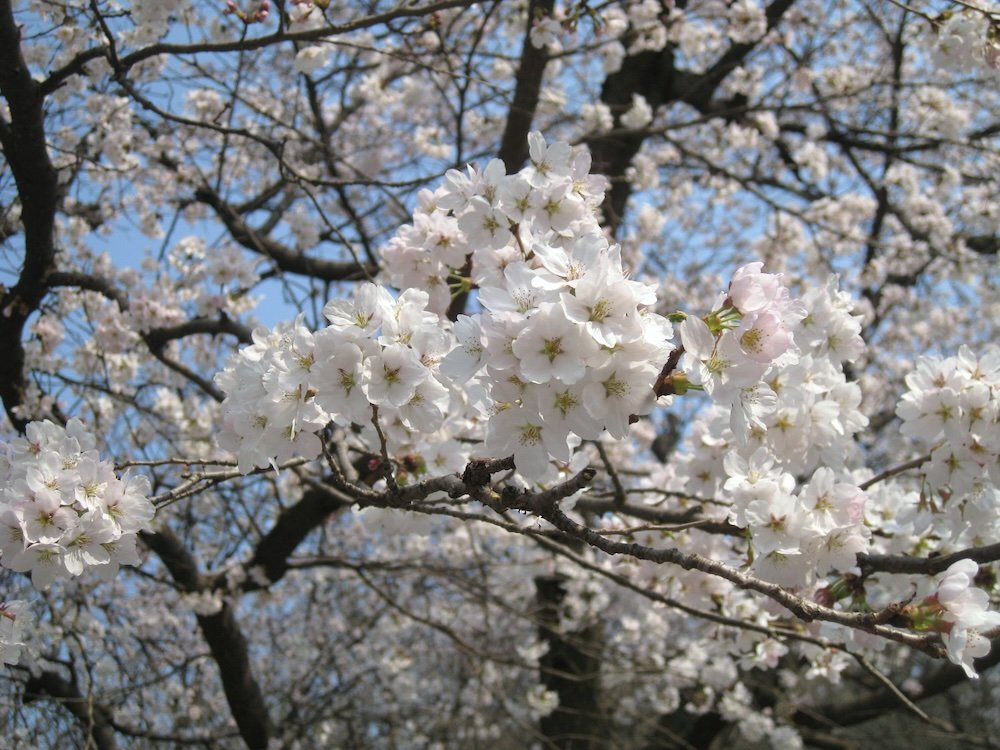
- Cultural Richness: Discover temples, museums, and festivals that showcase Korea’s rich heritage.
- Natural Beauty: Enjoy scenic mountains, rivers, and parks perfect for outdoor enthusiasts.
- Technological Hub: Explore science centers and exhibitions that highlight Korea’s advancements.
Tip: Visit in spring or autumn to enjoy mild weather and witness the city’s stunning cherry blossoms or colorful foliage!
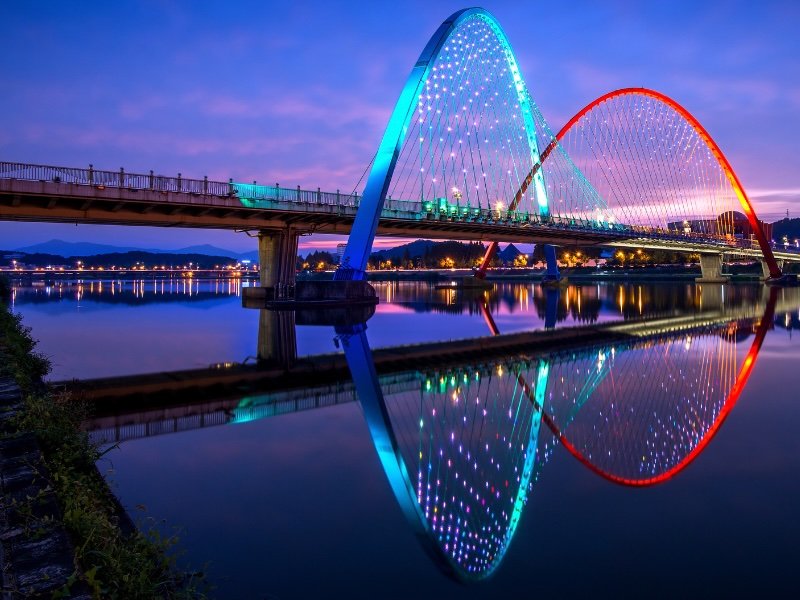
Top 20 Things To Do in Daejeon, Korea For Visitors
1. Explore the National Science Museum
Dive deep into the world of science and technology at the National Science Museum, one of Korea’s premier educational attractions. Established in 1990, the museum spans multiple floors, each dedicated to different scientific fields. Interactive exhibits make complex concepts accessible, engaging visitors of all ages. From robotics demonstrations to virtual reality experiences, the museum showcases the latest in technological innovation.
- Interactive Exhibits: Engage with hands-on displays covering physics, chemistry, biology, and engineering. Try operating a robotic arm, or generate electricity using kinetic energy.
- Educational Programs: Participate in workshops, science classes, and special events designed to inspire curiosity and learning.
- Planetarium: Enjoy immersive shows that take you on a journey through the cosmos, exploring stars, planets, and galaxies with stunning visual effects.
Tip: Allocate at least half a day to fully explore the museum. Check the schedule for English-language shows and consider booking tickets online to avoid queues!
2. Visit Expo Park and Hanbit Tower
Relive the excitement of the 1993 Daejeon Expo at Expo Park, a sprawling complex that combines education, entertainment, and culture. The park is a legacy of the international exposition that celebrated advancements in science and technology. The centerpiece, Hanbit Tower, stands at 93 meters tall and offers an observation deck with panoramic views of the city and surrounding landscapes.
- Hanbit Tower Observation Deck: Ascend to the top for breathtaking vistas of Daejeon, especially captivating during sunset when the city lights begin to twinkle.
- Exhibitions and Museums: Explore permanent and temporary exhibits focusing on themes like environmental sustainability, space exploration, and future technology.
- Outdoor Spaces: Stroll through beautifully landscaped gardens, interactive fountains, and art installations that make for perfect photo opportunities.
Tip: Visit in the evening to see the park illuminated with colorful lights. Don’t miss the musical fountain show, which combines water, light, and music for a mesmerizing experience!
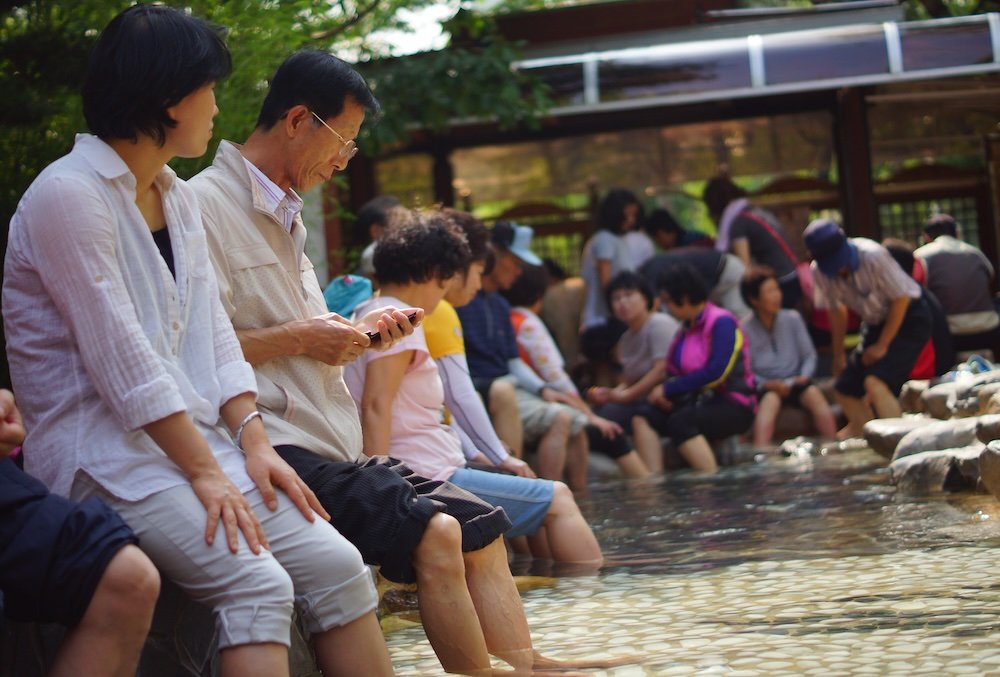
3. Relax at Yuseong Hot Springs
Immerse yourself in the therapeutic waters of Yuseong Hot Springs, one of Korea’s oldest and most renowned hot spring resorts. The springs have a history dating back over 600 years and were historically frequented by royalty. The mineral-rich waters are believed to aid in relieving muscle pain, improving skin health, and promoting overall relaxation.
- Therapeutic Waters: Soak in pools with temperatures ranging from warm to hot, allowing the minerals to rejuvenate your body and mind.
- Spa Treatments: Indulge in massages, aromatherapy sessions, and skin treatments offered by nearby spas and wellness centers.
- Cultural Experience: Participate in traditional Korean bathing rituals, which include a thorough scrub and relaxation in jjimjilbang (Korean sauna) facilities.
Tip: Public foot baths are available for free along the streets of Yuseong, so you can enjoy a quick soak even if you’re short on time. Remember to bring a towel and be prepared to follow local etiquette, such as showering before entering communal baths!
4. Hike Mount Gyejoksan and Walk the Barefoot Trail
Connect with nature by hiking Mount Gyejoksan, a 429-meter-high mountain offering trails that cater to both casual walkers and seasoned hikers. The highlight is the Gyejoksan Barefoot Trail, a unique 14-kilometer red clay trail designed for barefoot walking. Walking shoeless on the soft clay is said to improve circulation, reduce stress, and provide a natural foot massage.
- Barefoot Trail: Experience the sensation of walking on warm, soft clay while enjoying the fresh mountain air. The trail is well-maintained and passes through forests and open meadows.
- Scenic Beauty: Enjoy panoramic views of Daejeon and the surrounding countryside from various lookout points along the trail.
- Historical Sites: Discover ancient fortresses like Daecheong Fortress, and stone pagodas that pepper the landscape, offering a glimpse into Korea’s past.
Tip: Visit during the annual Gyejoksan Mountain Barefoot Festival held in May, where you can enjoy cultural performances, local food stalls, and community activities. Bring a small towel to clean your feet after the walk!
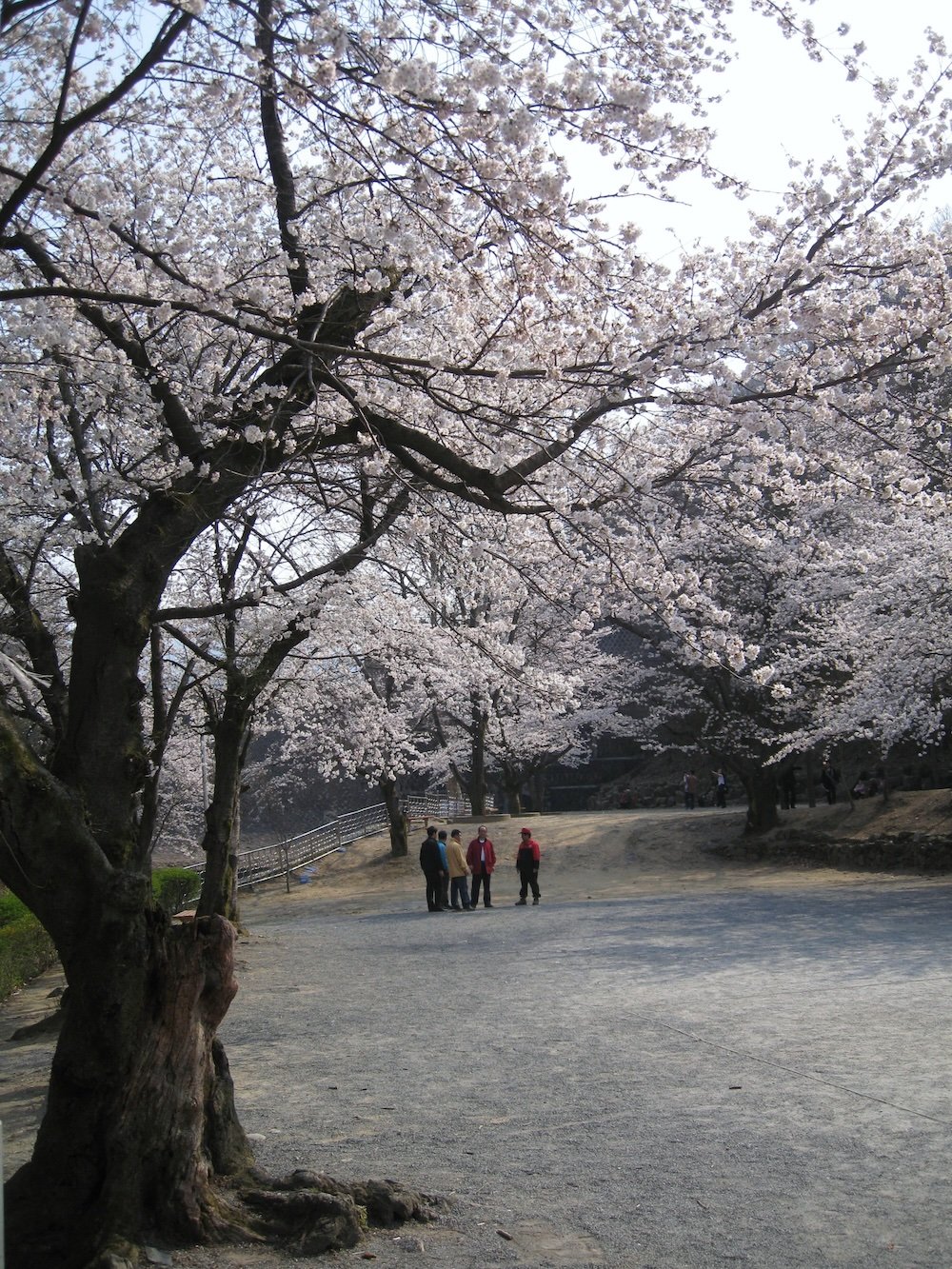
5. Discover Daejeon O-World
Experience a world of adventure at Daejeon O-World, a comprehensive theme park that combines a zoo (Zoo Land), a botanical garden (Flower Land), and an amusement park (Joy Land). Spread over 682,830 square meters, O-World is the perfect destination for families, couples, and thrill-seekers alike.
- Animal Encounters: Meet over 600 animals from 130 species, including lions, tigers, giraffes, and exotic birds. Interactive feeding sessions and educational shows are also available.
- Amusement Rides: Get your adrenaline pumping on roller coasters like the Boomerang or enjoy gentle rides suitable for children.
- Botanical Gardens: Wander through Flower Land, which features themed gardens such as the Rose Garden, Herb Garden, and Four Seasons Garden, showcasing vibrant blooms throughout the year.
Tip: Purchase a combo ticket to access all areas of O-World at a discounted rate. Arrive early to make the most of your day, and check the schedule for animal shows and parades to plan your visit efficiently!
6. Visit the Currency Museum of Korea
Delve into the monetary history of Korea at the Currency Museum of Korea, operated by the Bank of Korea. Opened in 1988, the museum offers a fascinating journey through the evolution of Korean currency, from ancient coins to modern banknotes. It’s an educational experience that sheds light on the country’s economic development.
- Historical Artifacts: View rare coins, banknotes, and monetary instruments dating back to the Goryeo and Joseon dynasties.
- Educational Exhibits: Learn about currency production processes, anti-counterfeiting technologies, and the role of money in society.
- Interactive Displays: Engage with multimedia presentations, such as virtual minting of coins or identifying counterfeit bills.
Tip: Admission is free, making it a great budget-friendly activity. Photography may be restricted in certain areas, so check the guidelines upon entry. Don’t forget to visit the gift shop for unique souvenirs like commemorative coins!
7. Explore the Daejeon Museum of Art
Immerse yourself in the contemporary art scene at the Daejeon Museum of Art. Established in 1998, the museum aims to promote cultural exchange and foster appreciation for modern art. With five exhibition halls, it showcases works by Korean and international artists across various mediums, including painting, sculpture, photography, and digital installations.
- Diverse Collections: Experience thought-provoking exhibitions that explore themes like identity, technology, and society. The museum often hosts retrospectives of renowned artists and collaborative international projects.
- Cultural Programs: Participate in lectures, artist talks, workshops, and performances that engage the community and enhance understanding of contemporary art.
- Architectural Beauty: Admire the museum’s modern design, featuring open spaces, natural light, and a harmonious blend with the surrounding landscape.
Tip: The museum is closed on Mondays. Visit on Wednesday evenings when it often extends its hours and may offer special events or free admission. Check the official website for current exhibitions and program schedules!
8. Wander Through Hanbat Arboretum
Escape the urban bustle at Hanbat Arboretum, the largest urban arboretum in Korea. Covering over 387,000 square meters, the arboretum is divided into East and West sections, each offering distinct themed gardens. It’s an oasis of tranquility where you can reconnect with nature amidst the city’s heart.
- Themed Gardens: Explore over 19 specialized gardens, including the Magnolia Garden, Medicinal Herb Garden, and Bonsai Garden. Each section is meticulously curated to showcase a diverse range of plant species.
- Walking Trails: Enjoy leisurely strolls along well-maintained paths that wind through forests, around ponds, and over quaint bridges.
- Seasonal Beauty: Witness cherry blossoms painting the landscape pink in spring, vibrant roses in summer, colorful foliage in autumn, and serene snowscapes in winter.
Tip: Pack a picnic and enjoy lunch in one of the designated areas. Early mornings are ideal for bird watching and avoiding crowds. Admission is free, making it a perfect spot for budget-conscious travelers!
9. Visit the Daejeon Observatory
Set your sights on the stars at the Daejeon Observatory, a haven for astronomy enthusiasts. Located atop Bomunsan Mountain, the observatory offers public access to high-powered telescopes and hosts educational programs designed to ignite a passion for space exploration.
- Stargazing Sessions: On clear nights, observe celestial wonders such as planets, star clusters, nebulae, and distant galaxies under the guidance of expert staff.
- Educational Programs: Attend lectures, workshops, and multimedia presentations that delve into topics like astrophysics, cosmology, and space science.
- Family-Friendly Activities: Interactive exhibits and hands-on activities make it an engaging experience for visitors of all ages.
Tip: Check the observatory’s schedule and weather conditions before visiting, as viewing sessions are dependent on clear skies. Dress warmly during cooler months, as temperatures can drop significantly at higher altitudes!

10. Shop and Dine at Skyroad in Eunhaeng-dong
Experience the vibrant energy of Skyroad in Eunhaeng-dong, a bustling pedestrian street known for its shopping, dining, and entertainment options. The highlight is the 214-meter-long LED canopy that stretches above the street, displaying dynamic light shows and multimedia content.
- LED Canopy Light Shows: Enjoy spectacular visual displays that range from artistic animations to interactive games. The shows typically start after sunset and run until late evening.
- Shopping Paradise: Browse a variety of shops offering the latest fashion trends, beauty products, electronics, and quirky souvenirs.
- Culinary Delights: Indulge in a gastronomic adventure with options ranging from street food stalls serving tteokbokki and hotteok to upscale restaurants offering Korean BBQ and international cuisines.
Tip: Visit during the evening to fully appreciate the light shows and lively atmosphere. Weekends can be crowded, so if you prefer a more relaxed experience, consider going on a weekday night. Wear comfortable shoes for walking and be prepared for sensory delights!
11. Explore Ppuri Park (Root Park)
Delve into Korean heritage at Ppuri Park, also known as Root Park, a unique attraction that celebrates family lineage and ancestral roots. The park features 136 giant sculptures representing common Korean surnames, along with educational exhibits about the significance of family history in Korean culture.
- Cultural Significance: Learn about the origins and meanings of Korean family names through informative plaques and interactive displays.
- Artistic Sculptures: Admire the intricate stone carvings and statues, each symbolizing a different surname and its historical background.
- Natural Surroundings: Enjoy the park’s serene environment, complete with walking trails, a river, and landscaped gardens ideal for relaxation.
Tip: If you have a Korean surname or are interested in genealogy, finding your family sculpture can be a meaningful experience. The park also hosts cultural festivals and events, so check the schedule for any special activities during your visit!
12. Visit Uam Historical Park
Step back in time at Uam Historical Park, dedicated to the esteemed Confucian scholar Song Si-yeol from the Joseon Dynasty. The park includes a meticulously reconstructed traditional Korean house (hanok), pavilions, and a serene pond surrounded by lush greenery.
- Historical Structures: Explore traditional architecture, including the main house, study rooms, and pavilions that reflect the aesthetics of the Joseon era.
- Educational Exhibits: Learn about Song Si-yeol’s life, his contributions to Confucian philosophy, and his impact on Korean history through displays and artifacts.
- Peaceful Setting: Stroll around the picturesque pond, relax under shaded trees, and soak in the tranquil ambiance that once inspired great thinkers.
Tip: Guided tours are available and highly recommended to gain deeper insights into the historical context. The park occasionally offers cultural performances and traditional music concerts—check ahead for event schedules!
13. Hike Bomunsan Mountain
Challenge yourself with a hike up Bomunsan Mountain, a popular destination for outdoor enthusiasts. Standing at 457 meters, the mountain offers a network of trails suitable for all fitness levels. It’s a favorite spot among locals for its accessibility and the rewarding views from the summit.
- Multiple Trails: Choose from various routes, such as the Bomunsan Circular Trail for a moderate hike or the Sky Bridge Trail for a more adventurous climb featuring a suspension bridge.
- Panoramic Views: From the peak, enjoy sweeping vistas of Daejeon, especially stunning at sunrise and sunset when the cityscape is bathed in golden light.
- Local Culture: Along the trails, you’ll encounter exercise stations, rest areas, and even small temples like Bomunsa Temple, providing cultural enrichment during your hike.
Tip: Wear appropriate hiking gear, including sturdy shoes and layered clothing. Bring sufficient water and snacks, as facilities on the mountain are limited. Early mornings or late afternoons are ideal times to avoid the midday heat and to capture the best photos!
14. Explore Daecheongho Lake and Dam
Experience the serenity of Daecheongho Lake, an expansive artificial lake formed by the Daecheong Dam on the Geum River. The lake stretches over 80 kilometers and is surrounded by rolling hills and dense forests, making it a haven for nature lovers.
- Water Activities: Rent boats or kayaks to explore the tranquil waters, or try your hand at fishing—it’s a popular spot for catching carp and bass.
- Cycling and Hiking: Enjoy well-paved paths around the lake ideal for cycling, jogging, or leisurely walks. The Daecheongho Obaekni-gil trail offers 12 sections of scenic routes.
- Ecological Exploration: Visit the Daecheongho Natural Ecology Center to learn about the local ecosystem, wildlife, and conservation efforts.
Tip: The lake is particularly picturesque during autumn when the surrounding foliage turns vibrant shades of red and orange. Pack a picnic and make a day of it. If you’re interested in bird watching, bring binoculars to spot migratory birds!
15. Visit the Jangtaesan Recreational Forest
Escape into the natural wonder of the Jangtaesan Recreational Forest, renowned for its dense groves of metasequoia and ginkgo trees. The forest offers a rejuvenating experience with its fresh air, scenic trails, and tranquil atmosphere.
- Canopy Walks: Experience walking among the treetops on the Sky Tower and suspension bridges that offer unique perspectives of the forest below.
- Picnic and Camping Areas: Designated spots are available for picnics, barbecues, and camping, allowing for an immersive nature experience.
- Photography: Capture the enchanting beauty of towering trees, especially when sunlight filters through the leaves, creating a magical ambiance.
Tip: The forest is exceptionally beautiful in autumn and during the first snowfall. Remember to wear insect repellent during warmer months, and check if camping reservations are required in advance!
16. Discover the Daejeon Prehistory Museum
Uncover ancient history at the Daejeon Prehistory Museum, which showcases archaeological findings from the region dating back to the Paleolithic era. The museum provides insights into the lives of early inhabitants through artifacts, reconstructions, and interactive exhibits.
- Archaeological Artifacts: View stone tools, pottery, bone implements, and fossils that paint a picture of prehistoric life.
- Interactive Exhibits: Engage with hands-on displays, such as excavation simulations and ancient crafts demonstrations.
- Educational Programs: Participate in workshops, guided tours, and special lectures that deepen understanding of human history.
Tip: The museum often hosts temporary exhibitions and special events—check the schedule to enhance your visit. It’s a family-friendly destination that’s both educational and entertaining for children and adults alike!
17. Experience the Daejeon Skyroad Festival
If your visit aligns with summer, don’t miss the Daejeon Skyroad Festival, a vibrant event that transforms the Skyroad area into a hub of festivities. The festival celebrates art, technology, and community spirit, offering a variety of performances, interactive installations, and entertainment.
- Live Performances: Enjoy a lineup of music concerts, dance shows, and theatrical acts featuring both local and national artists.
- Art Installations: Interact with creative displays that blend technology and art, often utilizing augmented reality and digital media.
- Community Activities: Participate in workshops, games, and competitions that engage visitors and foster a sense of community.
Tip: Festival dates vary each year, typically occurring in July or August. Check the official Daejeon tourism website for precise dates and program details. Arrive early to secure a good viewing spot for performances and wear comfortable attire suitable for outdoor events!
18. Visit the Geological Museum
Embark on a journey through Earth’s history at the Geological Museum, operated by the Korea Institute of Geoscience and Mineral Resources. Established in 2001, the museum houses an extensive collection of minerals, rocks, fossils, and meteorites, offering a comprehensive look at geological phenomena.
- Extensive Collections: Explore exhibits featuring over 4,500 specimens, including rare minerals, gemstones, and impressive dinosaur fossils like a full-scale Tyrannosaurus rex skeleton.
- Educational Exhibits: Learn about plate tectonics, volcanic activity, and the formation of Earth’s landscapes through interactive displays and dioramas.
- Interactive Zones: Engage in hands-on activities like panning for gold, simulating earthquakes, or examining rocks under microscopes.
Tip: Admission is free, making it an excellent option for budget travelers. The museum is particularly engaging for children with its interactive elements. Allocate at least two hours to fully explore all the exhibits!
19. Explore the KAIST Campus
Tour the campus of the Korea Advanced Institute of Science and Technology (KAIST), one of Asia’s leading research universities. Founded in 1971, KAIST is renowned for its contributions to science and technology. The campus is open to visitors and features modern architecture, sculptures, and green spaces.
- Architectural Highlights: Admire innovative building designs like the KAIST Library, KI Building, and Creative Learning Building, which showcase cutting-edge architectural trends.
- Art Installations: Discover sculptures and public art scattered throughout the campus, adding a cultural dimension to the technological environment.
- Peaceful Environment: Enjoy the academic atmosphere with tree-lined paths, ponds, and gardens that offer a serene setting for a leisurely walk.
Tip: Visit the KAIST Museum located on campus to learn about the university’s history, achievements, and contributions to global science and technology. Check if any public lectures or events are scheduled during your visit for an enriching experience!
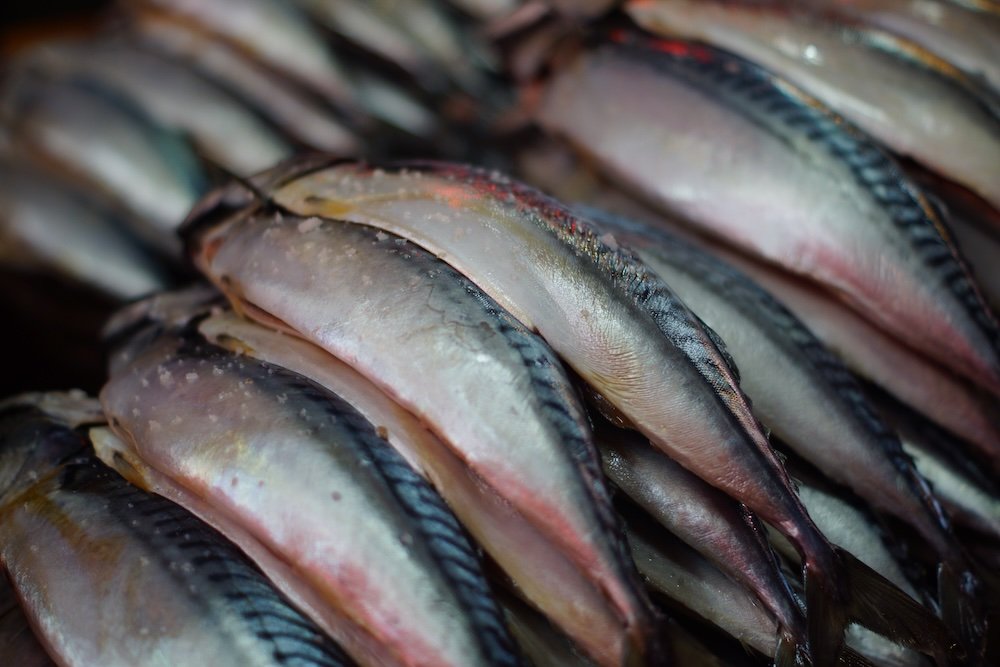
20. Shop at the Daejeon Jungang Market
Immerse yourself in local life at the Daejeon Jungang Market, the city’s largest and oldest traditional market. Established in 1953, the market boasts over 1,500 shops and stalls, offering an authentic glimpse into Korean commerce and daily life.
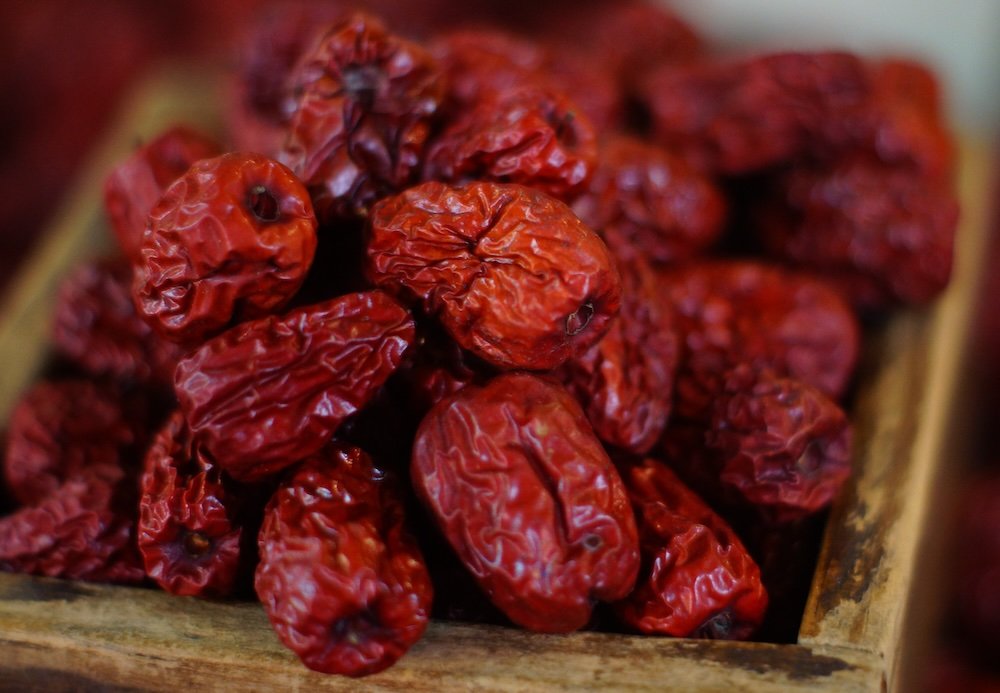
- Fresh Produce and Seafood: Browse stalls brimming with colorful fruits, vegetables, seafood, meats, and spices—an excellent opportunity to see (and taste) the ingredients that make up Korean cuisine.
- Street Food Haven: Indulge in a variety of Korean snacks and dishes such as gimbap, mandu (dumplings), pajeon (savory pancakes), and sundae (blood sausage).
- Variety of Goods: Shop for clothing, accessories, household items, and traditional crafts at bargain prices.
Tip: Bring cash in small denominations, as many vendors may not accept credit cards. Haggling is common in markets, so don’t hesitate to negotiate politely for a better price. Visiting in the morning ensures the freshest produce and a more relaxed shopping experience!
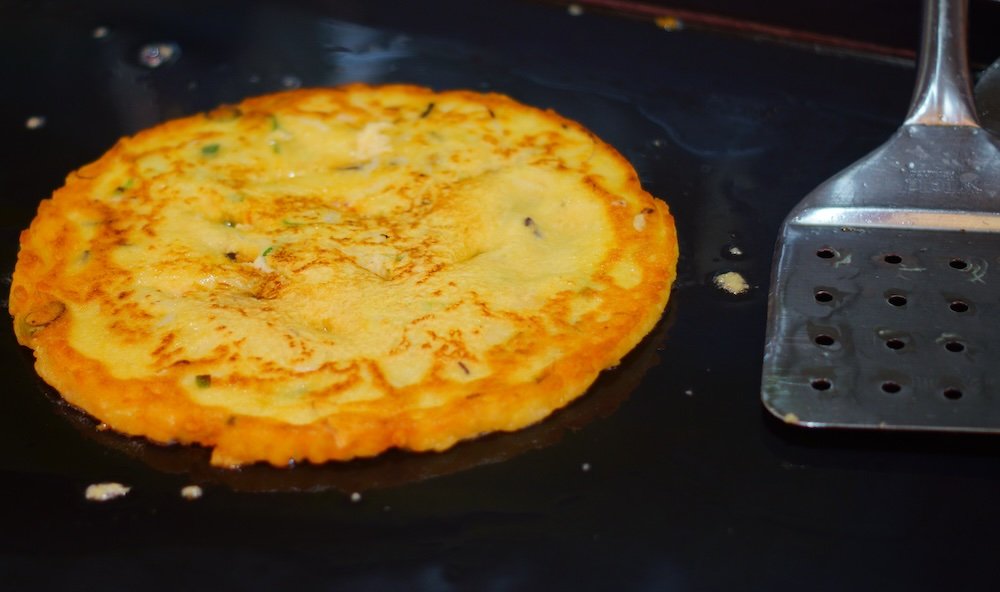
What To Eat and Drink in Daejeon, South Korea
Savor Local Delicacies
Daejeon’s culinary scene is a delightful fusion of traditional Korean flavors and unique local specialties that reflect the city’s cultural heritage and agricultural abundance.
Daejeon Tteokgalbi (Grilled Short Rib Patties)
Treat yourself to Daejeon Tteokgalbi, a savory dish featuring minced beef short ribs mixed with seasoning, shaped into patties, and grilled over charcoal. The result is tender, juicy meat with a smoky flavor that’s both satisfying and indulgent.
- Flavorful Meat: The patties are marinated with soy sauce, garlic, green onions, and a hint of sweetness, creating a harmonious blend of flavors.
- Healthy Option: Often served with lettuce leaves and perilla leaves for wrapping, accompanied by kimchi and other side dishes.
- Local Favorite: A signature dish of Daejeon, it’s a must-try for meat lovers seeking authentic Korean cuisine.
Tip: Pair the tteokgalbi with a bowl of hot rice and a glass of Korean rice wine (makgeolli) for a complete and authentic dining experience. Visit restaurants specializing in tteokgalbi for the best quality!
Spicy Seafood Kalguksu (Knife-Cut Noodle Soup)
Warm up with a hearty bowl of Spicy Seafood Kalguksu, a noodle soup featuring handmade knife-cut noodles in a rich, spicy broth loaded with an assortment of fresh seafood.
- Fresh Ingredients: The soup typically includes clams, mussels, squid, and shrimp, providing a depth of flavor and satisfying texture.
- Comfort Food: The spicy broth is seasoned with red pepper flakes, garlic, and anchovy stock, making it perfect for chilly days or when you crave something comforting.
- Affordable Meal: Generous portions are offered at reasonable prices, making it a popular choice among locals and travelers alike.
Tip: Visit traditional markets or local eateries where the noodles are made fresh daily. If you prefer a milder taste, ask for less spice when ordering. Complement your meal with side dishes like kimchi and pickled radish!
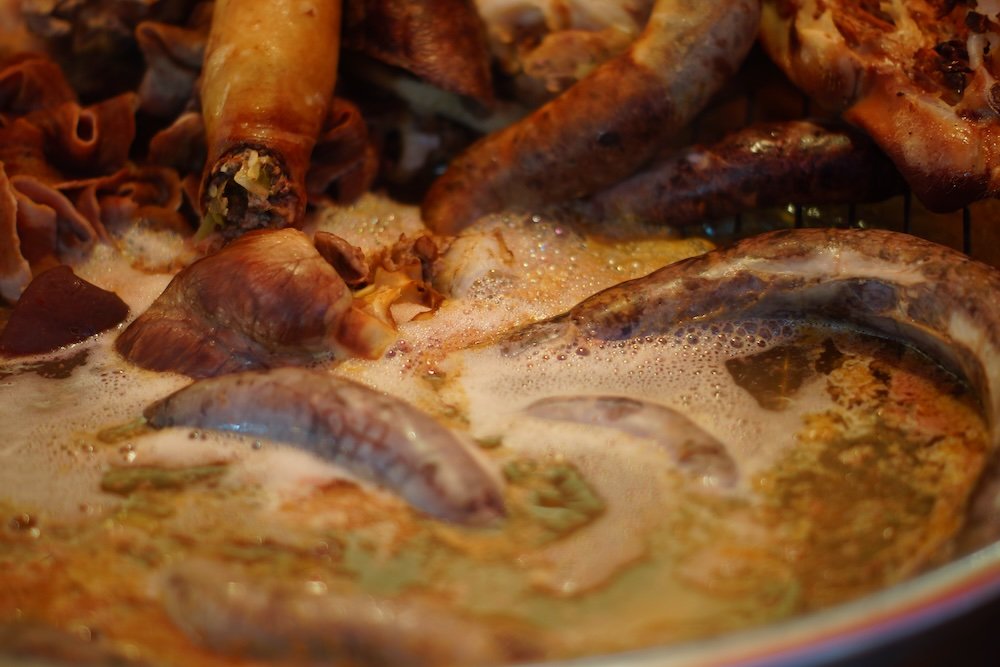
Sundae Gukbap (Blood Sausage Soup with Rice)
Experience a staple of Korean comfort food with Sundae Gukbap, a hearty soup featuring slices of sundae (Korean blood sausage) served in a rich, savory broth with rice.
- Rich Broth: The soup is made by simmering beef bones and intestines for hours, resulting in a flavorful and nourishing base.
- Nutritious: Packed with protein and iron, sundae gukbap is both filling and nutritious, often garnished with green onions and garlic.
- Cultural Dish: It’s a traditional dish that offers a glimpse into everyday Korean dining and is especially popular among locals for breakfast or lunch.
Tip: Customize the flavor by adding condiments provided on the table, such as salted shrimp paste, chili powder, or chopped peppers. It’s common to share side dishes, so enjoy the communal aspect of Korean dining!
Local Beverages
Complement your meals with traditional Korean drinks that enhance the culinary experience.
- Makgeolli: A milky, slightly sweet rice wine with a low alcohol content. It’s traditionally served in a communal bowl and poured into small cups.
- Soju: Korea’s famous clear distilled liquor, often enjoyed neat or mixed with beer (somaek). Flavored varieties like grapefruit or peach are available for those preferring a milder taste.
- Fruit Teas and Juices: Refreshing beverages made from local fruits like yuja (citron), maesil (plum), or omija (schisandra berry), offering health benefits and delightful flavors.
Tip: When drinking with locals, remember Korean drinking etiquette, such as pouring drinks for others and turning your head away when taking a sip in the presence of elders. Always drink responsibly!
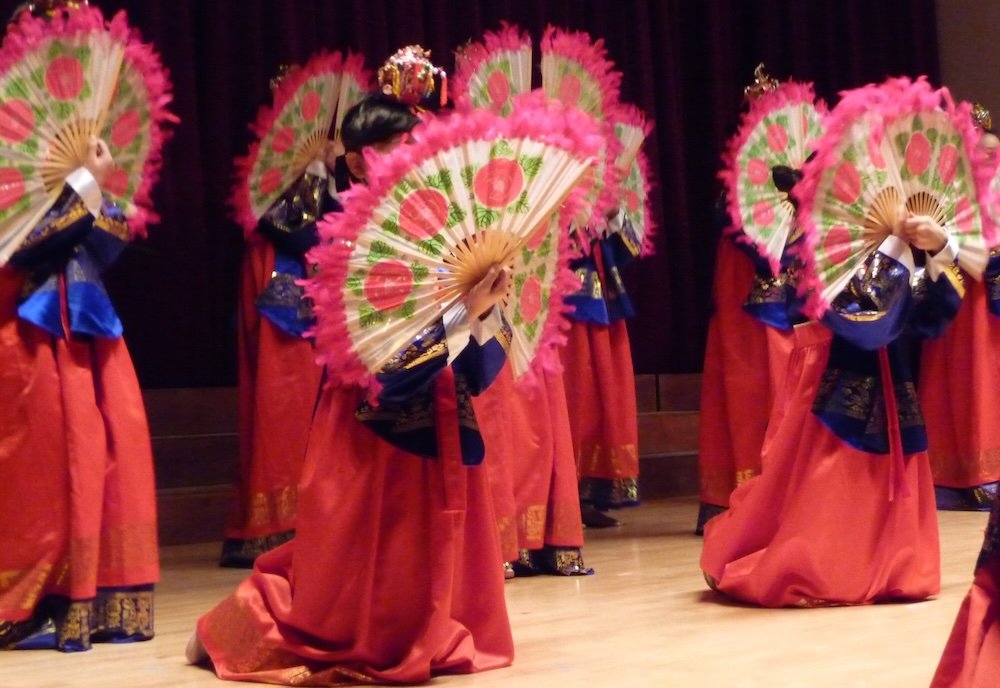
Tours For Visitors To Daejeon, Korea
Enhance Your Experience with Guided Tours
Joining a tour can significantly enrich your visit by providing deeper insights, convenient access to attractions, and opportunities to interact with knowledgeable locals. Whether you’re passionate about history, culinary delights, nature, or cultural immersion, Daejeon offers a variety of tours to suit your interests.
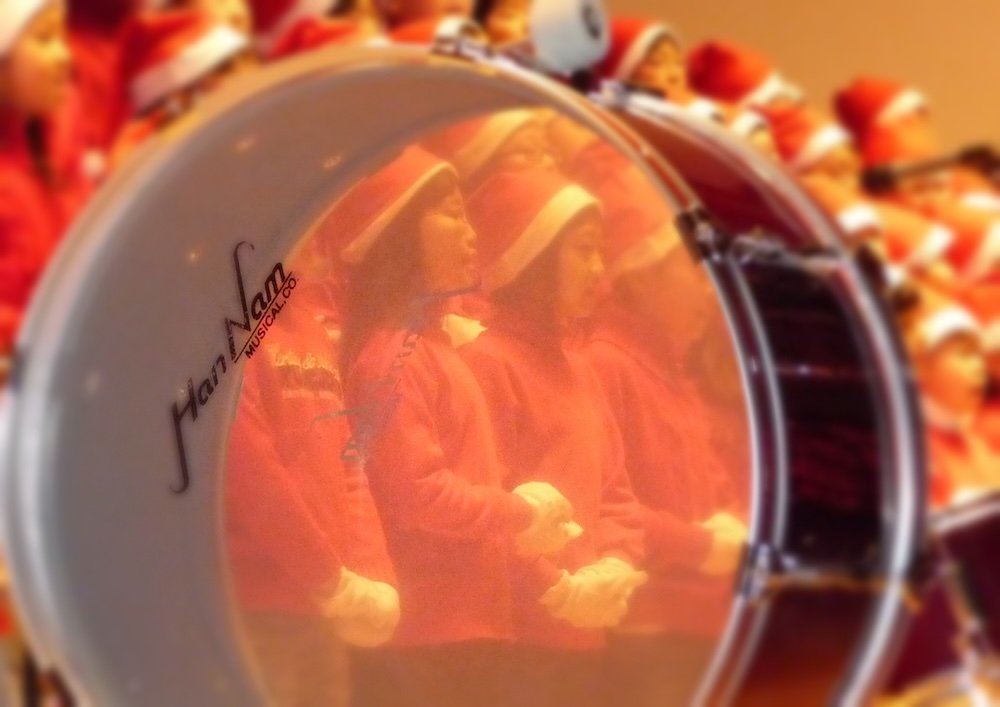
Historical and Cultural Tours
Discover Daejeon’s rich heritage with a guided tour focusing on historical sites and cultural landmarks.
- Expert Guidance: Learn about significant locations like Uam Historical Park, Ppuri Park, and Bomunsa Temple from experienced guides.
- Cultural Insights: Understand the traditions, customs, and philosophies that have shaped Korean society.
- Interactive Experiences: Participate in activities like traditional tea ceremonies, calligraphy, or hanbok (traditional clothing) wearing.
Tip: Book tours that offer language options suitable for you, and wear comfortable shoes as these tours often involve a fair amount of walking.
Science and Technology Tours
Explore the city’s innovative side with tours of science museums, research centers, and tech hubs.
- Educational Visits: Enjoy guided tours of the National Science Museum, Geological Museum, and KAIST campus.
- Behind-the-Scenes Access: Some tours may offer access to areas not usually open to the public, such as labs or workshops.
- Interactive Learning: Engage with cutting-edge technology and participate in hands-on experiments or demonstrations.
Tip: Ideal for families and tech enthusiasts. Check if pre-registration is required for certain facilities and bring identification if needed.
Nature and Hiking Tours
Experience Daejeon’s natural beauty with organized hikes and outdoor activities led by knowledgeable guides.
- Guided Hikes: Safely explore Mount Gyejoksan, Bomunsan Mountain, or Jangtaesan Recreational Forest with insights into local flora and fauna.
- Ecological Education: Learn about environmental conservation efforts and the region’s biodiversity.
- Photography Opportunities: Guides can point out the best spots for capturing stunning landscapes and wildlife.
Tip: Ensure the tour matches your fitness level. Wear appropriate attire, including sturdy shoes and weather-appropriate clothing, and always carry water and sun protection.
Food and Market Tours
Dive into the local food scene with a culinary tour that tantalizes your taste buds.
- Market Visits: Navigate bustling markets like Jungang Market with a local, discovering hidden gems and sampling street food.
- Food Tastings: Try a variety of dishes you might not encounter on your own, guided by someone who knows the best spots.
- Cooking Classes: Participate in making traditional Korean dishes, learning recipes and techniques to take home.
Tip: Inform the tour operator of any dietary restrictions in advance. Come hungry and ready to explore new flavors!

Daejeon Accommodations Guide: Hotels, Guesthouses, and Hostels
Find Your Perfect Stay
Whether you’re seeking luxury or traveling on a budget, Daejeon offers a range of accommodations to suit your needs. From upscale hotels with top-notch amenities to cozy guesthouses that provide a homey feel, you’ll find the perfect place to rest after a day of exploration.
Luxury Hotels
Indulge in comfort and elegance at Daejeon’s top-tier hotels, offering premium services and facilities.
- Lotte City Hotel Daejeon: Featuring modern rooms with panoramic city views, a fitness center, and an on-site restaurant serving international cuisine. Conveniently located near Expo Park and the National Science Museum.
- Hotel Interciti: Offers spacious rooms, a full-service spa, and easy access to Yuseong Hot Springs. The hotel boasts multiple dining options and conference facilities.
- Ramada by Wyndham Daejeon: Provides luxurious accommodations with amenities like a rooftop terrace, business center, and proximity to shopping districts.
Tip: Book directly through the hotel’s website or use reputable booking platforms to secure the best rates. Look out for package deals that include breakfast or spa services.
Mid-Range Hotels
Enjoy quality accommodations without breaking the bank. These hotels offer comfortable rooms and essential amenities at reasonable prices.
- Good Morning Residence Hue: Ideal for longer stays, offering rooms equipped with kitchenettes, laundry facilities, and a rooftop garden. Located near government complexes and cultural sites.
- Benikea Technovalley Hotel: Situated near the Daedeok Innopolis, this hotel features modern rooms, free Wi-Fi, and a complimentary breakfast buffet.
- Toyoko Inn Daejeon: A Japanese chain known for cleanliness and efficiency, providing cozy rooms with a complimentary breakfast. Close to the subway station for easy transportation.
Tip: Mid-range hotels often have loyalty programs or partnerships with airlines for points and discounts. Check for these benefits when booking.
Budget Hostels and Guesthouses
Perfect for backpackers, solo travelers, and those seeking a more social atmosphere. Budget accommodations in Daejeon are clean, safe, and offer a chance to meet fellow travelers.
- Daejeon Guesthouse Sky Garden: Offers dormitory and private rooms with communal kitchen facilities and a rooftop garden. Located in the city center, close to attractions and public transport.
- Kyungha Spa Hotel: Combines accommodation with traditional Korean spa facilities. Guests can enjoy jjimjilbang amenities and comfortable sleeping quarters.
- Max Hotel: Provides affordable rooms with basic amenities, situated in a central location near shopping and dining options.
Tip: Read recent reviews to ensure the accommodation meets your expectations regarding cleanliness and noise levels. Some guesthouses offer free breakfast or city tours—take advantage of these perks!
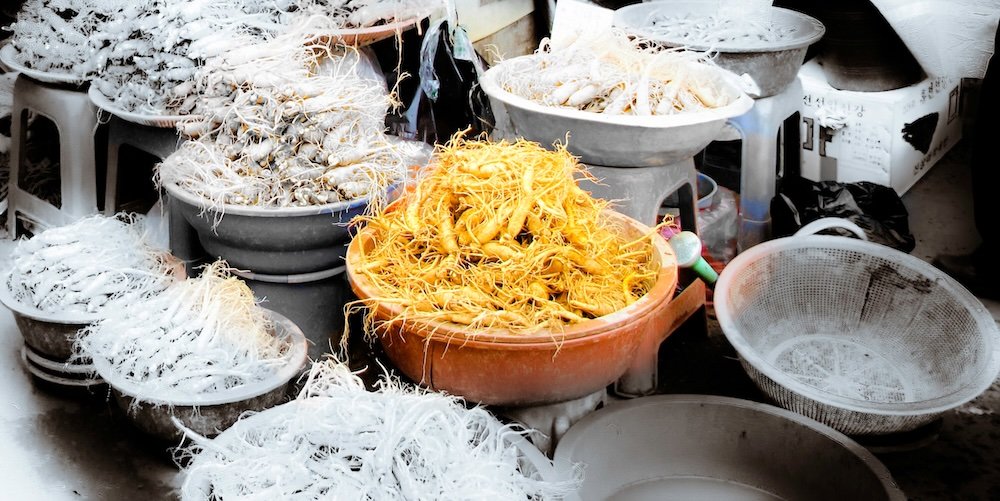
Day Trips From Daejeon, South Korea
Explore Beyond the City
Daejeon’s central location makes it an excellent base for day trips to nearby attractions. Discover historic cities, cultural landmarks, and natural wonders just a short journey away.
Gongju and Magoksa Temple
Visit the historic city of Gongju, the ancient capital of the Baekje Kingdom, rich in archaeological sites and cultural heritage.
- Gongsanseong Fortress: Explore this UNESCO World Heritage site, a mountain fortress offering panoramic views of the city and Geum River. Walk along the walls and discover hidden gates and pavilions.
- Magoksa Temple: Experience tranquility at this serene Buddhist temple nestled in a valley. The temple is known for its beautiful architecture and peaceful surroundings.
- Gongju National Museum: Learn about Baekje history and culture through artifacts, royal tombs, and interactive exhibits.
Tip: Wear comfortable shoes for walking and consider joining a guided tour for in-depth insights. Allocate a full day to fully appreciate Gongju’s offerings.
Buyeo and Baekje Cultural Land
Step back in time at Baekje Cultural Land in Buyeo, an expansive complex that recreates the splendor of the Baekje Kingdom.
- Historical Reenactments: Witness performances depicting ancient court ceremonies, military parades, and traditional dances.
- Architectural Replicas: Explore reconstructed palaces, temples, and villages that bring history to life.
- Cultural Activities: Participate in hands-on experiences like pottery making, archery, and traditional games.
Tip: Check the event schedule to catch special festivals or ceremonies. The complex is large, so wear comfortable attire and plan your route to cover must-see areas.
Jeonju Hanok Village
Experience traditional Korean culture at the Jeonju Hanok Village, home to over 800 preserved hanok (traditional Korean houses).
- Architectural Beauty: Stroll through narrow streets lined with hanok, many of which operate as guesthouses, teahouses, and artisan shops.
- Culinary Delights: Try Jeonju bibimbap, a famous local dish known for its rich flavors and colorful presentation. Visit makgeolli bars to taste traditional rice wine.
- Cultural Workshops: Engage in activities like calligraphy, traditional music lessons, or hanbok wearing for memorable experiences and photos.
Tip: Allocate a full day to fully enjoy all the activities. Consider renting a hanbok for a truly immersive experience and better photo opportunities. Jeonju is about an hour’s train ride from Daejeon.
source: My Nomadic Samuel YouTube Channel
Daejeon Transportation Guide
Getting Around with Ease
Navigating Daejeon is straightforward thanks to its efficient public transportation system. Whether you prefer subways, buses, taxis, or bicycles, the city offers convenient options to suit your travel needs.
By Subway
Use the Daejeon Metro for quick and easy travel across the city.
- Lines: Two main lines (Line 1 and Line 2) connect major areas, including downtown, government complexes, and key attractions like Expo Park.
- Tickets: Purchase single-journey tickets or rechargeable cards like T-money or Cashbee, which can be used nationwide on subways and buses.
- Frequency: Trains run every 5-10 minutes from approximately 5:30 AM until midnight.
Tip: Download a subway map app or pick up a physical map at stations. Announcements are usually made in Korean, but signs and maps often include English translations.
By Bus
Buses reach areas not covered by the subway, offering an extensive network throughout Daejeon.
- Comprehensive Network: Numerous routes connect neighborhoods, universities, and tourist sites.
- Payment: Use T-money or Cashbee cards for convenience, or pay with cash (exact change required).
- Bus Stops: Major stops provide route maps and schedules, sometimes with English information.
Tip: Use apps like KakaoMap or NAVER Map for real-time bus information and route planning. Buses can be crowded during peak hours, so plan accordingly.
By Taxi
Taxis are plentiful, clean, and relatively affordable, making them a convenient option, especially for short distances or late-night travel.
- Availability: Hail a taxi on the street, find them at taxi stands, or use ride-hailing apps like Kakao Taxi.
- Fares: Meters start at a base rate, with incremental increases based on distance and time.
- Types: Standard taxis are silver or white, while deluxe taxis are black with yellow signs and offer more space at a higher fare.
Tip: Have your destination written in Korean to show the driver, as not all may speak English. Tipping is not customary in Korea.
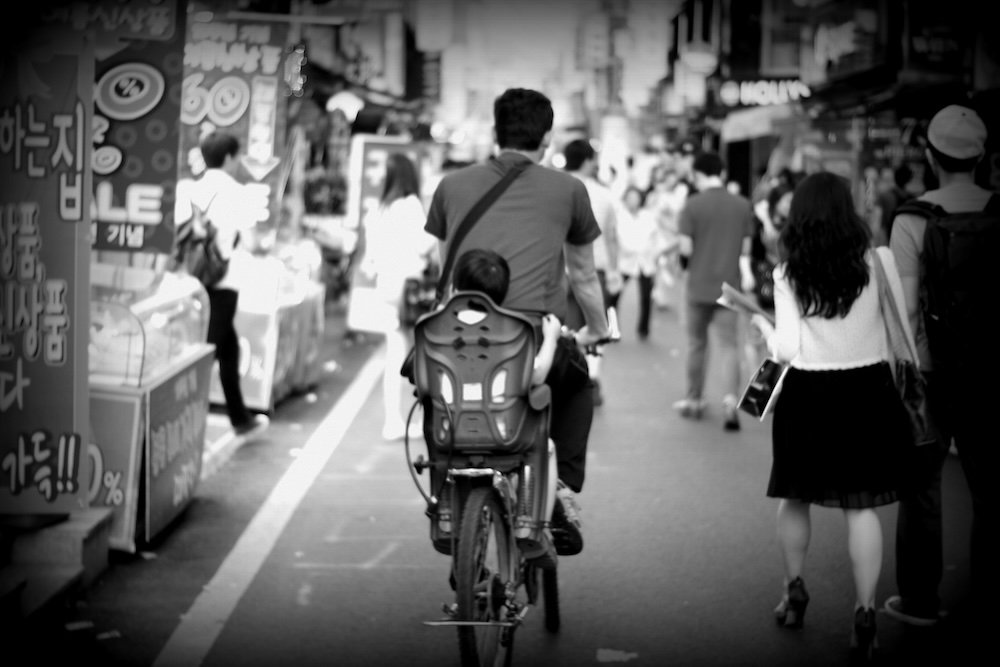
By Bicycle
Explore the city on two wheels, enjoying the scenic routes along rivers and parks.
- Rental Services: Tashu public bikes are available at numerous stations across the city. Register at kiosks or via the Tashu website.
- Bike Paths: Dedicated lanes along the Gapcheon River and through parks make cycling safe and enjoyable.
- Cost-Effective: Affordable hourly rates with options for daily or longer-term rentals.
Tip: Always wear a helmet and follow traffic rules. Be cautious when cycling in busy areas and lock your bike securely when not in use.
By Car
Renting a car provides flexibility, especially if you plan to explore surrounding regions.
- Rental Agencies: Available at Daejeon Station and in city centers. International companies like Avis and local agencies offer services.
- Requirements: An International Driving Permit (IDP) is required for foreign visitors, along with a valid driver’s license from your home country.
- Navigation: GPS units may be available in English. Smartphone apps like KakaoMap or NAVER Map can assist with navigation.
Tip: Traffic can be heavy during peak hours, and parking in downtown areas may be limited. Consider using public transportation within the city and renting a car for day trips.
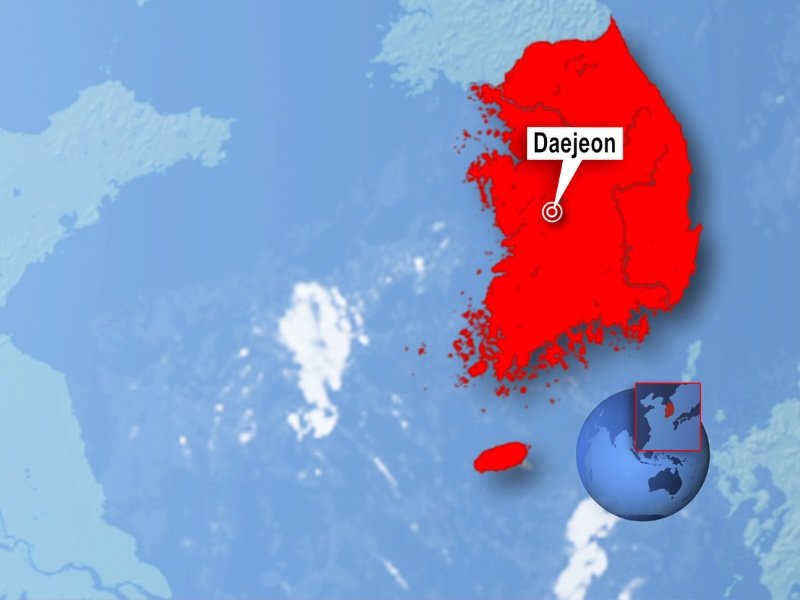
Daejeon Travel Guide: Final Thoughts
Daejeon is a city that effortlessly blends innovation with tradition. From exploring cutting-edge science museums to hiking serene mountains, there’s no shortage of things to do in this dynamic city. The warmth of its people and the depth of its cultural offerings make Daejeon a must-visit destination in South Korea.
- Cultural Immersion: Engage with local traditions through historical sites, festivals, and interactive experiences.
- Culinary Adventures: Savor unique local dishes that tantalize the taste buds and reflect the region’s heritage.
- Natural Beauty: Enjoy scenic parks, hiking trails, hot springs, and serene lakes that provide a refreshing escape from urban life.
Tip: Embrace the local customs, learn a few Korean phrases, and be open to new experiences. Daejeon’s charm lies in its ability to surprise and delight visitors who venture beyond the typical tourist paths.
All the best as you explore all that Daejeon has to offer!
